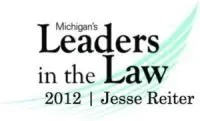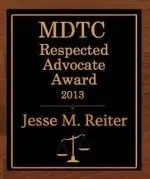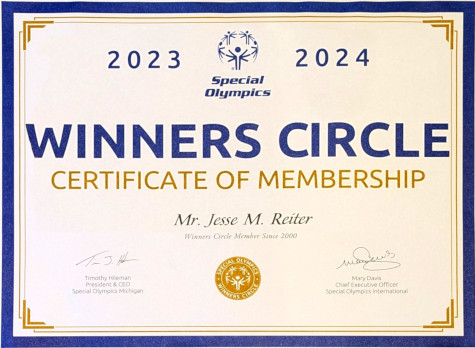One common labor and delivery complication is the failure of the baby’s head to “engage” in the mother’s pelvis. This means that although the baby is otherwise ready to be born, their presenting body part has not yet moved into a position that will allow for a safe and comfortable birth. In some cases, this is because the baby is in an abnormal fetal presentation, such as breech (feet first) or posterior (head first, but facing the mother’s back rather than her front).
In these situations, there are a variety of interventions that may be performed, including manual rotation and Cesarean section (C-section) (1). Another lesser known option is the “Spinning Babies” technique.
Who started the “Spinning Babies” movement?
The “Spinning Babies” technique was created by midwife Gail Tully (CPM) in 1998 (2).
How does the “Spinning Babies” technique work?
Instead of trying a variety of positions to see which helps, the Spinning Babies method involves choosing when to use a position based on where the baby is located in relation to the mother’s pelvis (3). For this, Gail Tully developed Belly Mapping®, a process that uses fetal movements to predict a baby’s position late in pregnancy. Fetal position can also be confirmed via ultrasound (4).
If a baby’s position is sub-optimal, vaginal delivery may still be possible by using the Spinning Babies technique. There are three components of this technique, called the “Three Sisters of Balance,” which help the mother’s abdomen relax and make room for fetal rotation. These include:
- Rebozo sifting: This technique originates from Mexico, and involves the use of a long scarf.
- Forward-leaning inversion through 3 contractions: This involves the mother kneeling on a low surface (such as a mattress or stair), with her forearms resting on the floor/a lower surface.
- Sidelying release through 3 contractions on each side: This is a type of “static stretch” that can help to temporarily enlarge/soften the pelvic opening.
These techniques are often used earlier in pregnancy, too, not just in labor. The Spinning Babies website notes that if they are used earlier in pregnancy, the likelihood of needing to spin the baby in labor may be lower (classes are offered in the Spinning Babies technique).
In labor, the Three Sisters are often followed by a period of rest. After this, if labor hasn’t progressed sufficiently, the Three Sisters may be followed by other techniques. This can involve a variety of movements, including the “Abdominal Lift and Tuck,” lunges, or internal rotation of the baby (5).
How successful is “Spinning Babies”?
The Spinning Babies method appears to have helped many pregnant and laboring women to have safe vaginal deliveries. As Gail Tully explained to Mamamia, “Every day I hear women from around the world tell me their back pain has eased, their cesareans were cancelled outside the operating room, transverse babies suddenly turn head down…” (6).
Indeed, this method began at Tully’s independent practice, but is now used at hospitals and birth centers around the world. For example, in 2018, over 600 midwives, doulas, doctors, and childbirth educators attended a sold-out conference in Jerusalem to learn more about Spinning Babies (2).
Despite mounting anecdotal evidence for the success of Spinning Babies, and support from medical professionals around the world, clinical data on this method is lacking. Moreover, it is important to note that there are many situations in which Spinning Babies should not be used. These include the following, among others (7, 8):
- The mother is experiencing pregnancy bleeding
- Anterior placenta (when the placenta is located between the baby and the mother’s abdomen). This is not necessarily a contraindication, but caution should be used when attempting Rebozo sifting because vigorous movement can be dangerous.
- High blood pressure (hypertension), postural orthostatic tachycardia syndrome (POTS), recent surgery, weak shoulders, or glaucoma (all of these conditions may make the upside down movement in forward-leaning inversion risky).
- Hypermobility (this can be a contraindication for the sidelying release, but medical professionals may be able to find alternative solutions).
- Any situation in which an emergency C-section is necessary, and there is no time to first attempt less invasive solutions such as Spinning Babies. If medical professionals delay in performing an emergency C-section when one is needed, the consequences can be very serious, and this can be a form of medical malpractice.
About ABC Law Centers: Birth Injury Lawyers
ABC Law Centers: Birth Injury Lawyers was established to focus exclusively on birth injury cases. A “birth injury” is any type of harm to a baby that occurs just before, during, or after birth. This includes issues such as oxygen deprivation, infection, and trauma. While some children with birth injuries make a complete recovery, others develop disabilities such as cerebral palsy and epilepsy.
If a birth injury/subsequent disability could have been prevented with proper care, then it constitutes medical malpractice. Settlements from birth injury cases can cover the costs of lifelong treatment, care, and other crucial resources.
If you believe you may have a birth injury case for your child, please contact us today to learn more. We are happy to talk to you free of any obligation or charge. In fact, clients pay nothing throughout the entire legal process unless we win.
Free Case Review | Available 24/7 | No Fee Unless We Win

Sources
- Abnormal Fetal Position/Presentation and Birth Injury. (n.d.). Retrieved January 28, 2020, from https://www.abclawcenters.com/practice-areas/prenatal-birth-injuries/abnormal-position-or-presentation/
- How to ‘spin’ your unborn baby, and other birthing techniques. 2018. Retrieved January 28, 2020, from https://www.timesofisrael.com/how-to-spin-your-unborn-baby-and-other-birthing-techniques/
- What is Spinning Babies? – A New Paradigm of Birth. (n.d.). Retrieved January 28, 2020, from https://spinningbabies.com/what-is-spinning-babies/
- Belly Mapping – How to tell baby’s position in the womb. (n.d.). Retrieved January 28, 2020, from https://spinningbabies.com/learn-more/baby-positions/belly-mapping/
- In Labor Now – Is baby engaged? (n.d.). Retrieved January 28, 2020, from https://spinningbabies.com/start/in-labor/in-labor-now/
- Lever, C. (2019, May 13). When a Melbourne mum found her baby was breech at 32 weeks, she ‘turned’ him herself. Retrieved January 28, 2020, from https://www.mamamia.com.au/how-to-turn-a-breech-baby-around/
- Tully, G. (2018, December 26). When Not to Use Spinning Babies® Techniques. Retrieved January 28, 2020, from https://spinningbabies.com/when-not-to-use-spinning-babies-techniques/
- Delayed Emergency C-Section. (n.d.). Retrieved January 28, 2020, from https://www.abclawcenters.com/practice-areas/prenatal-birth-injuries/labor-and-delivery-complications-and-errors/delayed-emergency-c-section/





















